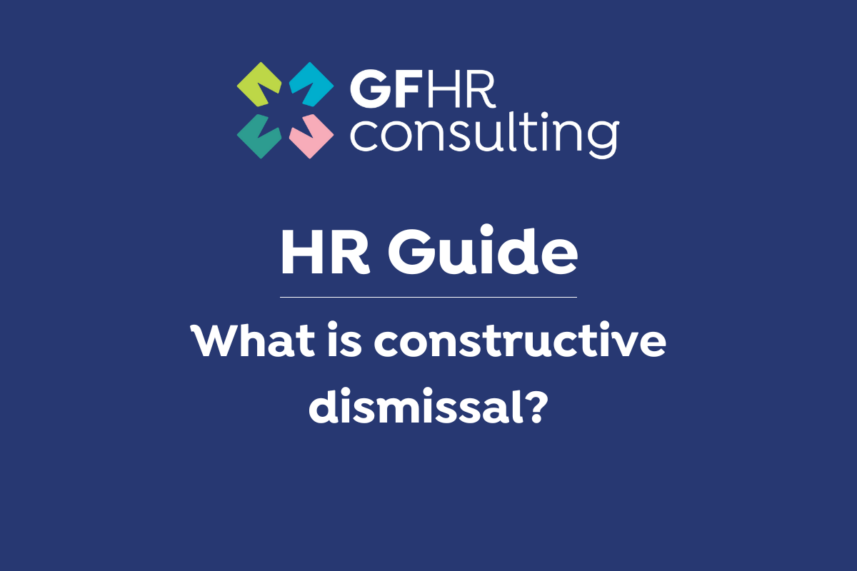You’ve probably heard the term ‘constructive dismissal’ before, but are you clear on what it actually means?
Constructive dismissal is the term that applies when a change to an employee’s working conditions or unfair treatment forces them to quit.
Sometimes this is confused with unfair dismissal, which is where you fire the employee.
With constructive dismissal, the employee feels forced out of the business due to conditions beyond their control (such as their employer’s behaviour).
Usually, an employee can only claim constructive dismissal if they’ve been employed with a company for more than 2 years. However, if they claim discrimination this rule doesn’t apply.
If an employment tribunal finds you guilty of constructive dismissal, you’ll be liable to pay compensation to the employee. The amount depends on factors like how long the employee has worked for you, their age and their weekly pay.
There’s a cap on the basic award of £17,130, and a cap on the compensatory award of £93,878. That means in total, including legal fees and travel expenses, you could be looking at spending more than £110,000.
This is just one of the reasons you want to avoid a constructive dismissal claim. Aside from the expense, it takes up a lot of time and can tarnish your business’s reputation, as well as creating a feeling of unrest or bad feeling amongst remaining employees.
With this in mind, what are some examples of constructive dismissal?
Mr Parbhjot Singh v Metroline West Limited
The employee went on sick leave following an invitation to a disciplinary meeting. He attended an occupational health (OH) appointment to assess his capability. The OH advisor didn’t suggest that his sickness wasn’t genuine. However, the employer believed that the sickness absence was a means of avoiding his disciplinary meeting, so paid the employee statutory sick pay instead of contractual sick pay.
The employee claimed to have been constructively dismissed due to the failure to pay their contractual pay.
The employment tribunal (ET) found that the employer failing to pay contractual sick pay was a breach of contract, but also stated that it was not a repudiatory breach. This was because the employer intended to maintain the employment relationship and withholding the employee’s pay was a means of doing this. However, the employment appeal tribunal (EAT) dismissed this line of reasoning, as the employee was entitled to pay which he didn’t receive.
Adams v Charles Zub Associates Ltd
The employee, Adams, hadn’t received his April salary by the 9th of May, so he quit his job and filed an unfair dismissal claim to an ET.
Ordinarily, because this constitutes a significant breach going to the “root of the employment contract”, the ET would conclude that the employee was constructively dismissed.
However, in this case, the ET found that although a breach of contract had occurred, it wasn’t the intention of the company to purposefully withhold the money, so it didn’t pass the test for constructive dismissal. This is because the employee was made aware of the organisation’s financial situation and the mitigating circumstances surrounding their pay.
This case highlights the importance of maintaining clear communication channels.
Craig v Abellio
In this case, an employee had been off work due to sickness. His sick pay was calculated and paid incorrectly as a result of a series of errors and miscommunications by the employer. The employee raised a grievance, and the employer was originally found to owe £2,000 to the employee. Then, the employer was found to owe over £6,000.
The employer agreed to pay the employee by a specified date but failed to pay by the deadline. The employee resigned the next day and brought a constructive dismissal claim.
The ET and EAT went back and forth on whether the issue was a result of mistakes or a genuine repudiatory breach. Originally, it was found that the failure to pay was merely a mistake and not a breach of an express contractual term. However, the EAT eventually sent the case back to the ET for further consideration.
This case demonstrates how difficult it can be to determine whether the final straw in a constructive dismissal is enough to raise a successful claim.
As you can see, constructive dismissal isn’t clear cut. Tribunals can be long processes, and even when you think they’re concluded, an appeal can be launched.
If you’re unsure as to where you stand with any employee dispute, or potential cause for concern, take expert advice before you act. It could save you a lot of time, money and stress. Please get in touch if you need advice.

